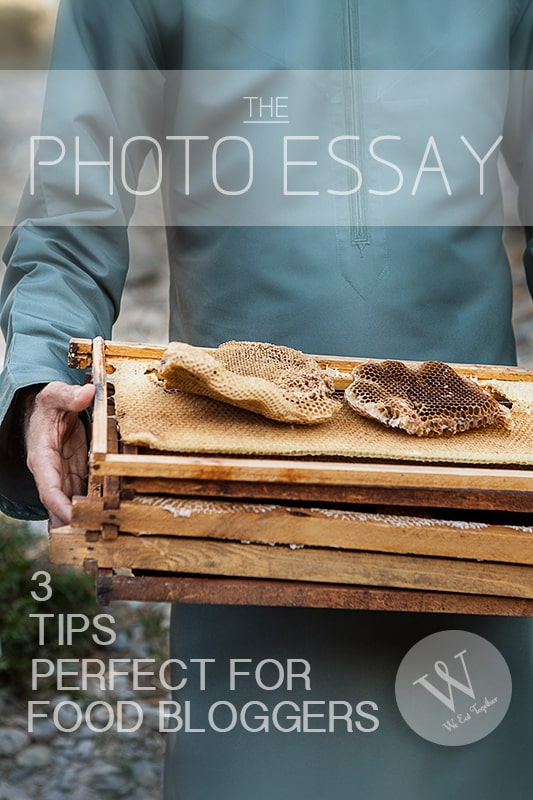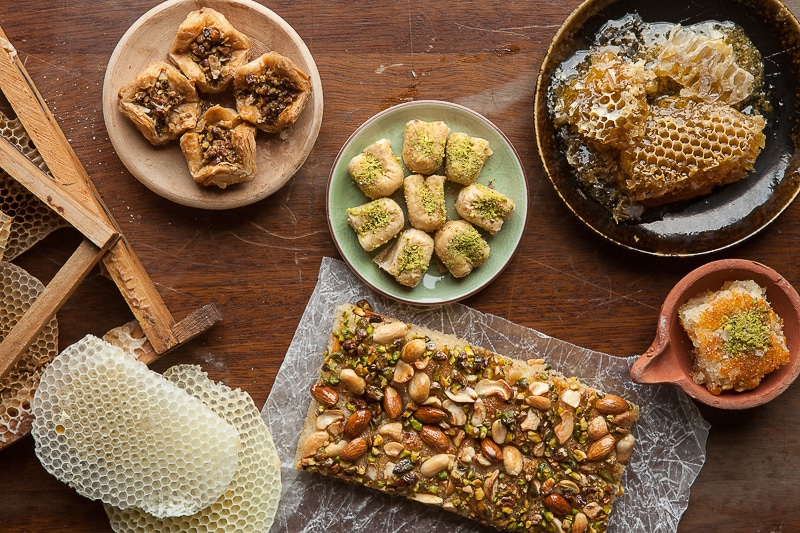THE SWEETEST STORY TOLD
(PHOTO ESSAY BY HEATHER & SKYLER BURT)
Not too long ago Heather and I finished up a photo essay we’ve been working on. With a weekend spent shooting here and there, it took us a few months to complete.
Our subject was only reachable by 4×4 trucks, in a remote mountainous area of The Sultanate of Oman above the wadi Sahtain.
We were shooting the natural honey farmers of the region and their traditional beekeeping lifestyle.
Natural and sustainable farming is a subject dear to both of us and we’ve been wanting to document it for a very long time. We both hope to do a much larger story that encompasses a variety of locally grown foods to show just how much can come from a desert.

Honey was a great subject to start with, as our daughter Ciela was in heaven on the farms. Milking the swarms of baby goats each morning and having all the honey she could eat buy lunch.


I can now release the essay on the blog and I thought, while I was sharing our story, I might give a few photo essay tips for food bloggers.
1. STEAL THESE MOVES FROM THE TOP PUBLICATIONS
Crack open your favorite food magazine and I’m almost certain you’ll find one of these types of the photo essay below. These formats are not only simple, but almost endless wells to pull from. With monthly editions to crank out, photographers and writers love these types of stories because they’re usually quick to research and easy to produce.
- The Raw Ingredient Story
There is no boring ingredient! Where does your salt come from? Your pepper? Those walnuts? Think about it.
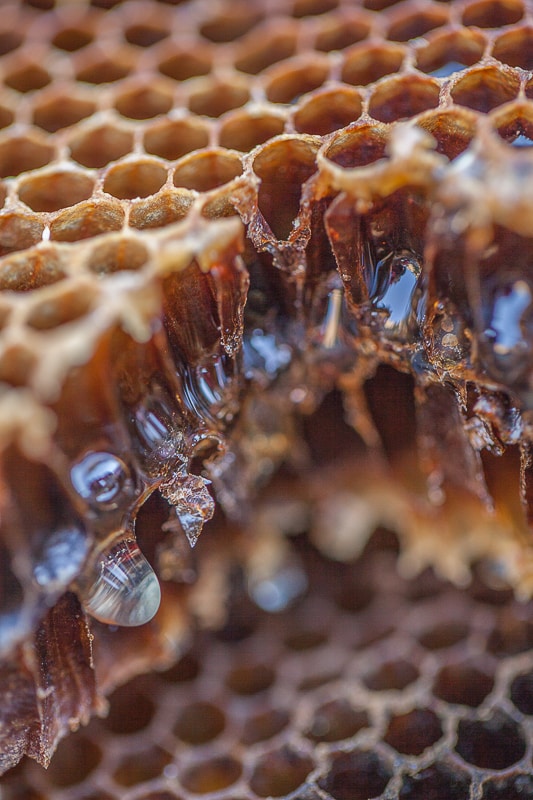
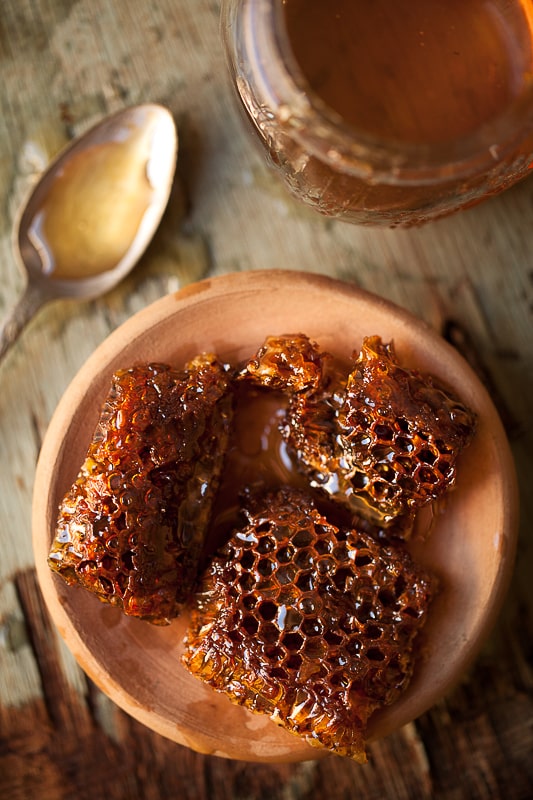
Our story of the natural honey farms is really an ingredient type of story. Holding a bottle of Omani honey, we said, “Hmm thats interesting.” Then we reverse engineer the entire idea from the market to where it was sourced.
Actually, our photo essay started at one of the most delicious chocolatiers in Muscat, Salma's Chocolates. Salma's Chocolates, specialize in incorporating indigenous ingredients into their truffles. One of which, is Omani honey. Our interest grew and we chased the golden sweet from the chocolate to the beekeepers.
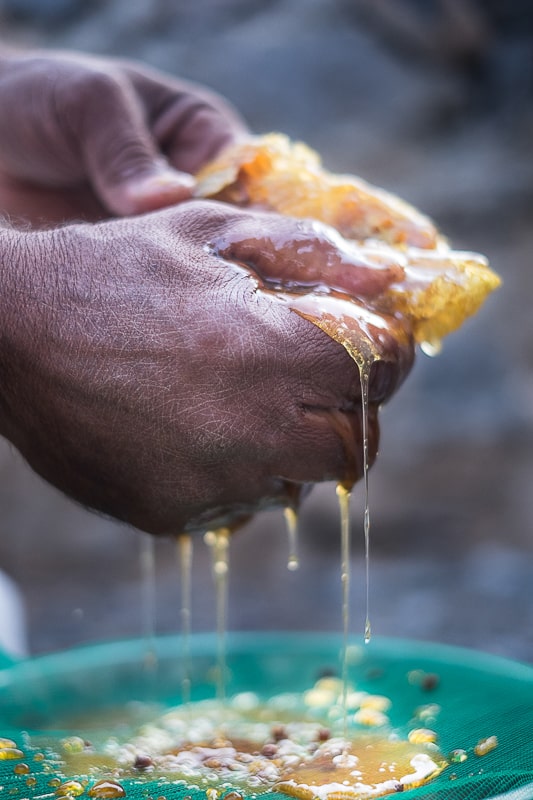
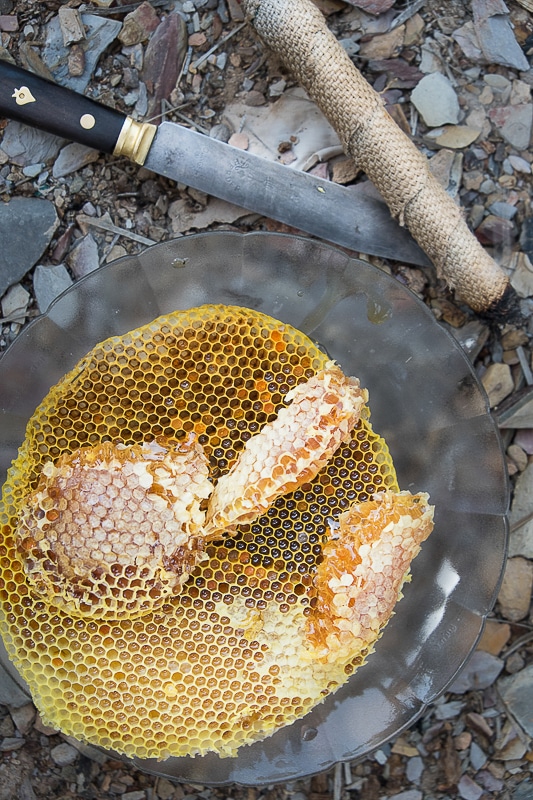
Ingredient photo essays can be fun and really interesting. We were given an opportunity to communicate the depth of an everyday item we take for granted. Behind your favorite ingredient there is a person or place that makes it possible for you to enjoy. If you do a bit of research, fantastic stories will emerge.
- The Local Interests Story
Lots of action happens locally, you don’t have to travel far to get a simple photo essay. Restaurants, bars, markets and food festivals should be the photo essay playground for food bloggers. Go out and meet people, communicate and really listen to their story.
This photo essay from Sara Tuck really gives her audience a sense of what it's like to visit the Stunning Tasmania's Salamanca Markets. The food blogger Katie Quinn Davis and Aran of Cannelle et Vanille show us some great local interest photo essays that food bloggers can do.
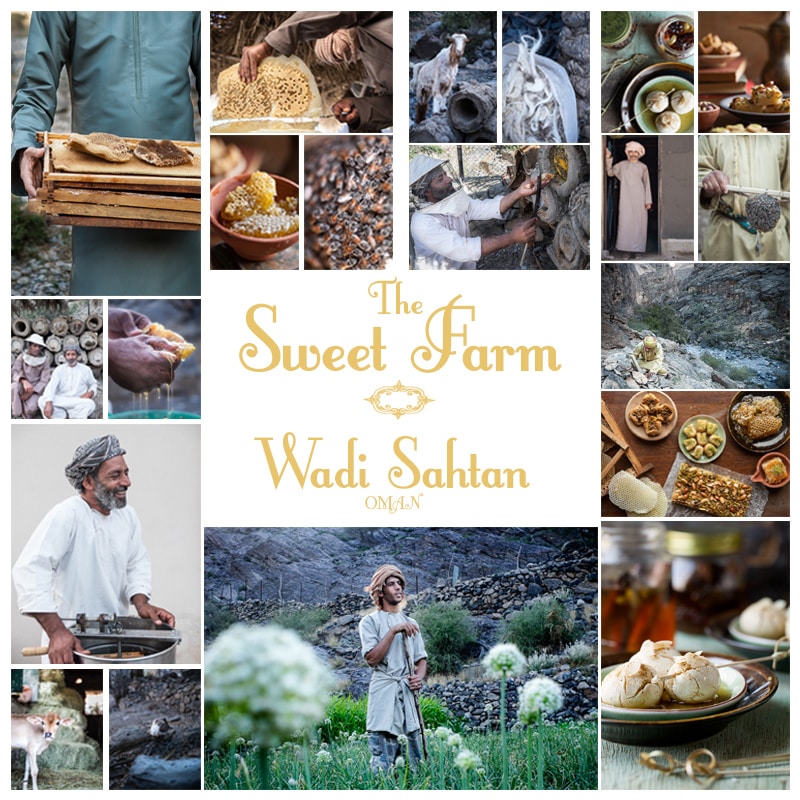

- The City Guide Photo Essay
A lot of work, but well worth the effort, a city guide can really give your reader a sense of the food, people and culture closest to you. Every city’s food culture is different. City guides can range from a bird’s eye view of your local food scene to a detailed walk-through, hosted by a local with authority. Check out the epic city guides that the What Should I Eat For Breakfast Today blogger Marta Greber is doing.
The city guide photo essay can be a roundup of the local interests and ingredients stories as well. From the top places to eat all the way to where they get the magical ingredients that make their dishes sing.
This year I created a city guide for Saison Küche (Seasonal Kitchen) a Swiss culinary magazine. It was a story covering the food tradition, good eats, and gastro talent through the recommendations of a local foodie authority in Galle, Sri Lanka. I think it’s pretty cool, but maybe that’s a little bias.
2. HOW TO BE A BADASS STORYTELLER EVEN IF YOU’VE NEVER DONE IT BEFORE
The best way to be badass, is to get things done. And the best way to get a photo essay done, is to get organized. A shot list will help you to stay organized, and get all of those ideas on paper. So you know what you have accomplished and how far you need to go. Here is our typical shot list we use to approach a photo essay. We sketch the below outline, then fill in the blanks with possible photos we think we might make.
- Lead Photo
This photo would work great as a lead to our story. It’s an anxious scene, with the thousands of bees, yet the beekeepers smile is inviting, this juxtaposition gives the viewer the feeling of wanting to know more.
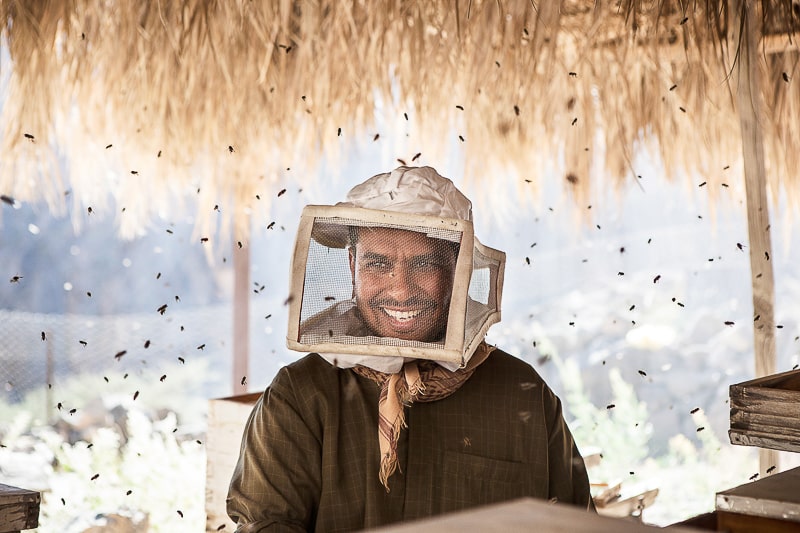
The lead in a photo essay is the hook. It draws the viewer in, peeking their curiosity to know more. The image could be a landscape scene or a portrait, but overall it should introduce the photo essay. Sometimes you know what your lead will be beforehand and sometimes it comes to you after you’re back and editing.
- Establishing Shot
The establishing shot gives the photo essay an immediate “sense of place.” It clearly shows where the story takes place, the environment, the mood of the location, the weather or whatever else is important for the viewer to know about the location.

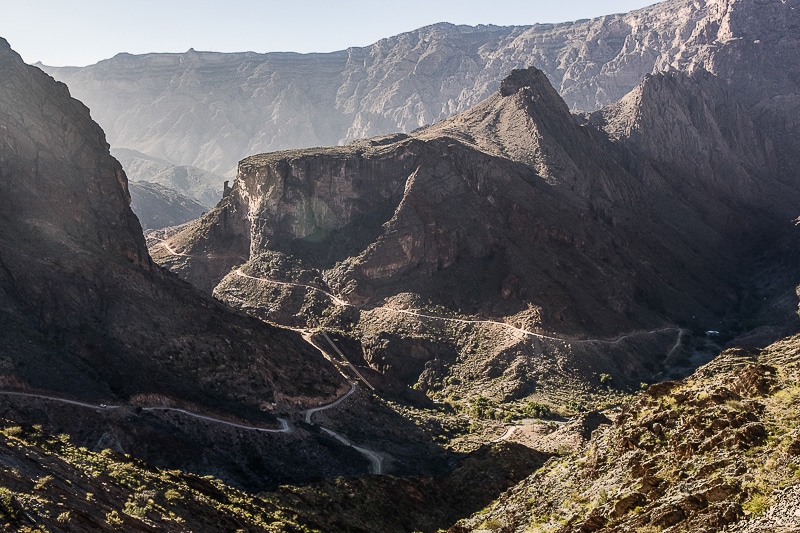
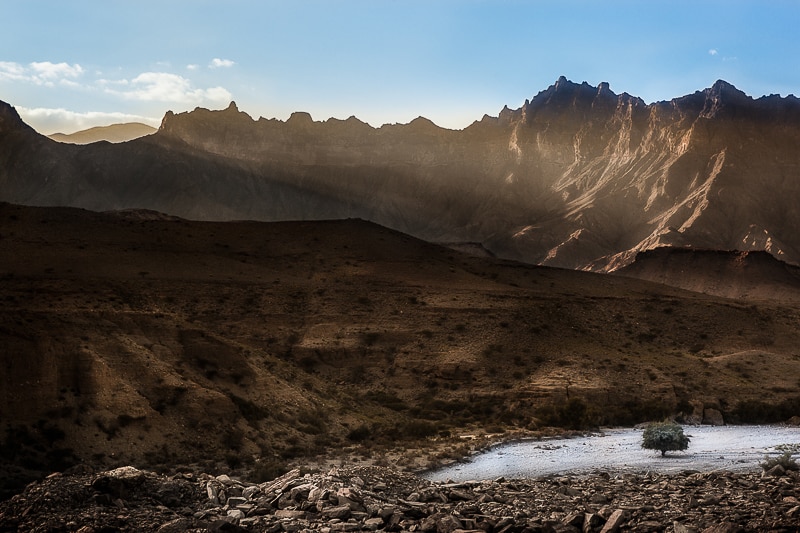
You can see in the establishing shot above, a wide shot showing the barren mountainous landscape where the beekeepers harvest the honey. Far away from society, so no other impurities are introduced into their production.
- Medium Shot
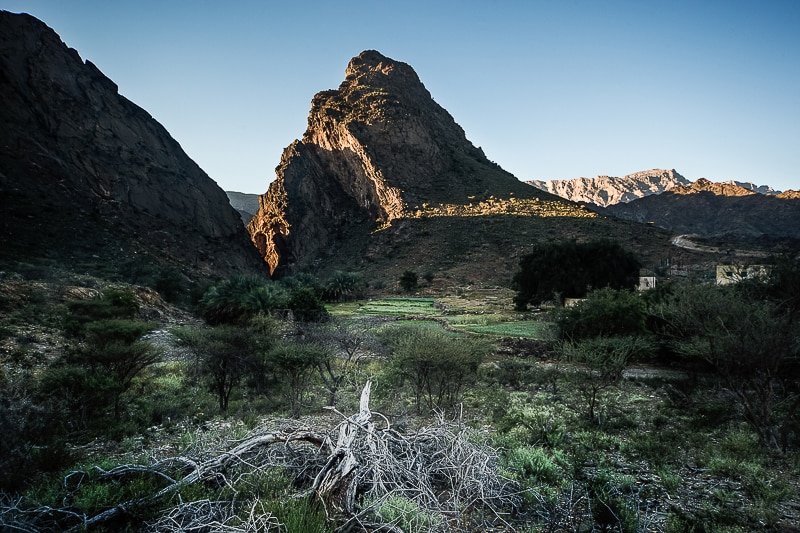
Zooming in a bit on the location, is the next level of the photo essay, the medium shot. In our story, this is where we introduce the farm to the viewer. Still we can see some of the environment, the mountains, but it’s more focused on the subject. A surprise of green not seen before in the dry establishing shot.

- Engaged Portrait
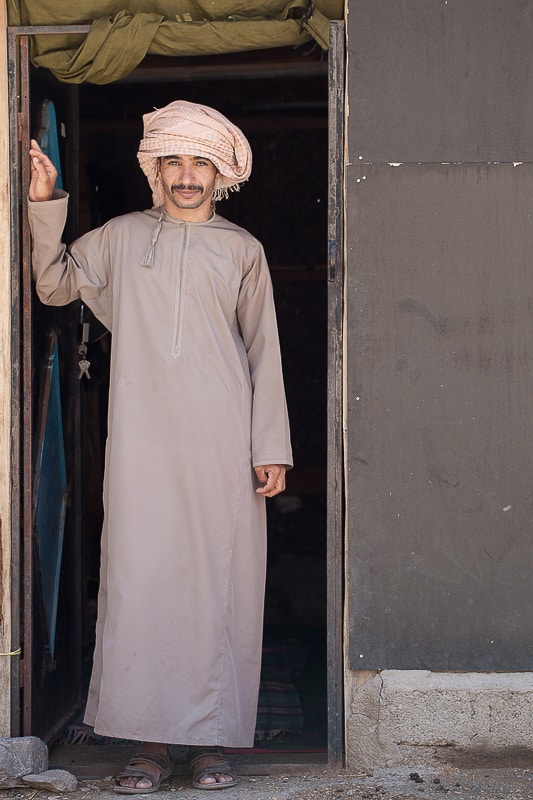
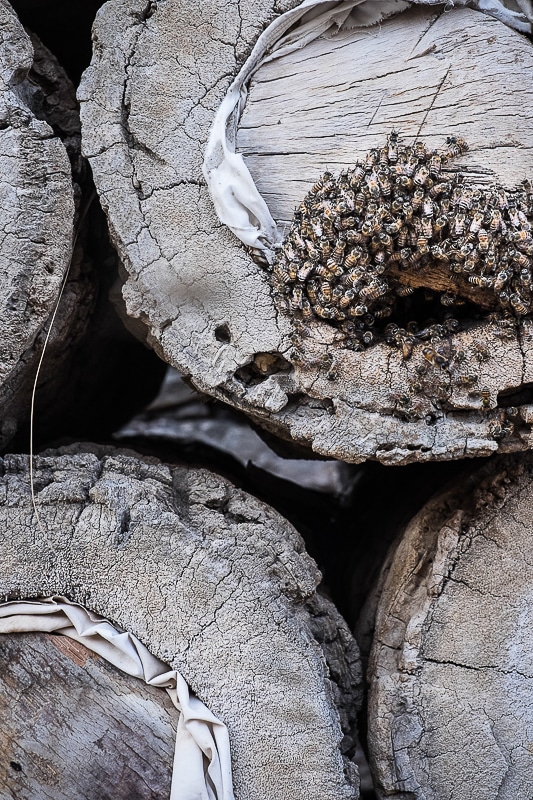
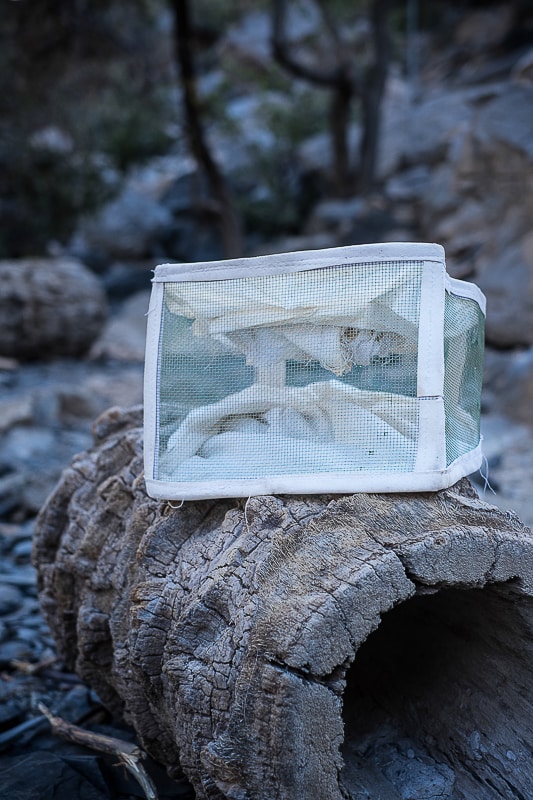
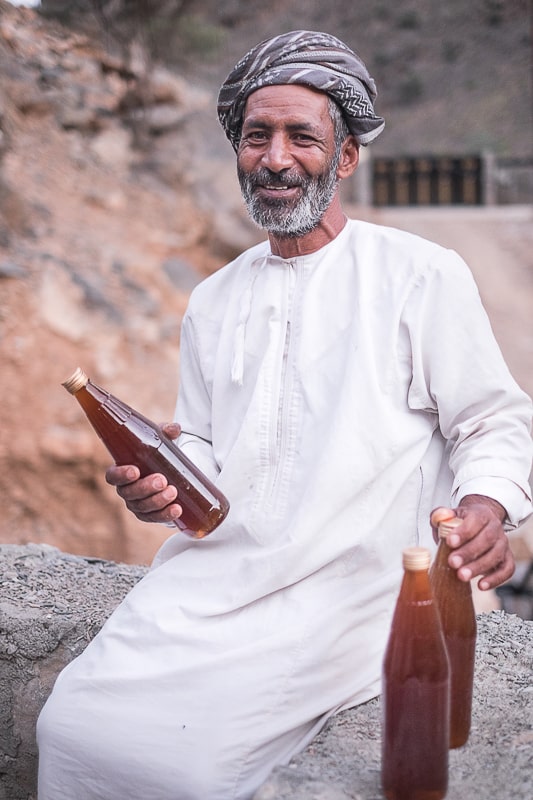
As you can see this is the first look at our subjects, the main actors in the story, up close and personally engaging the viewer. It’s used as a reference for the viewer as they look through the following images, to keep in their mind who this photo essay is about.
The subjects should be looking into the camera, showing their unique characters and maybe even a bit of their environments.
- Candid Portraits
Unlike the engaged portrait, the candids, are portraits of your subject which are un-staged. You’ll want to make a lot of these, they will play really nicely when you go to make diptychs with your detail shots later. This is also the point where you’ll want to add a few more characters to your photo essay.
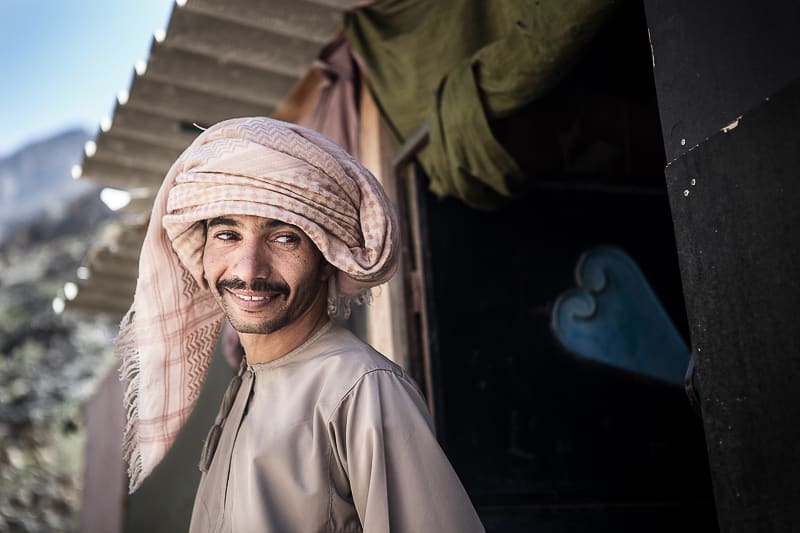
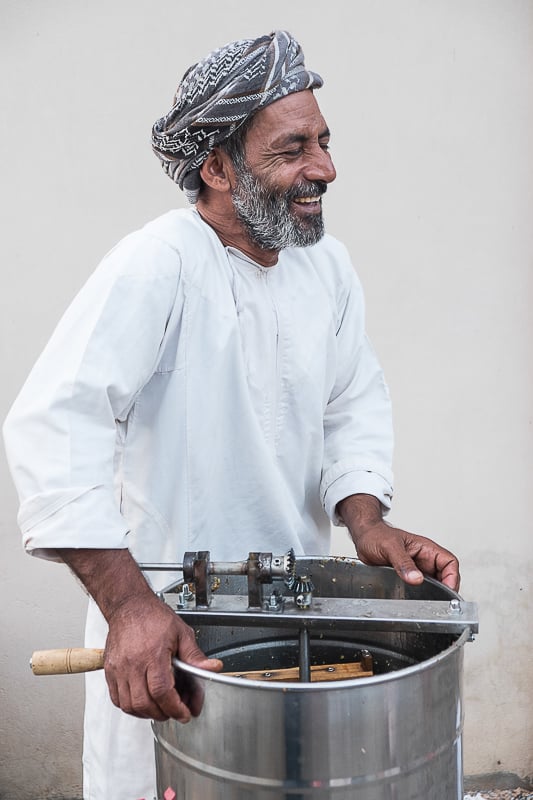
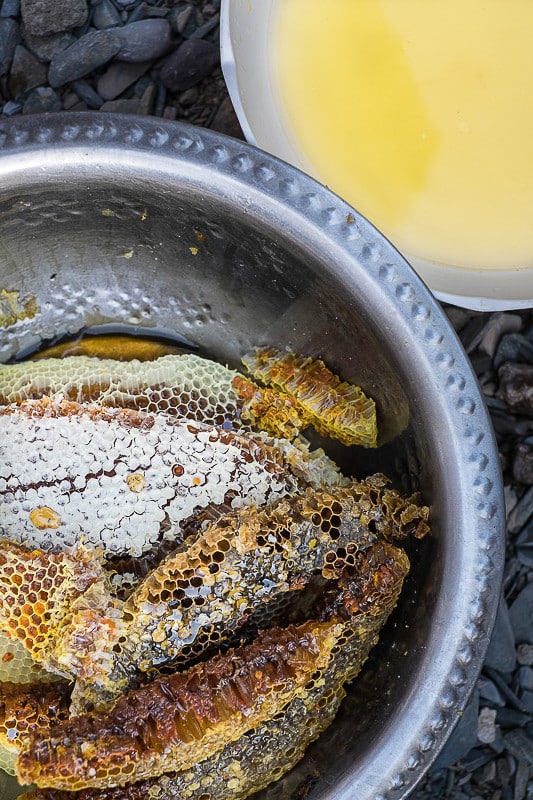

As you can see, our beekeeper had a few helping hands around the farm. Passing down the skills and the natural honey harvesting tradition to others was important to our story, so it was crucial to include these characters as well.
- Action Shots
Just like they sound, action shots are the bulk of what happens in your photo essay. This is where we show our viewer the process of the harvest. The work, hardship and joy involved in putting this sweet ingredient on the shelves of the community. If your subject is not comfortable with your presence, it might take a few visits to get natural action shots.
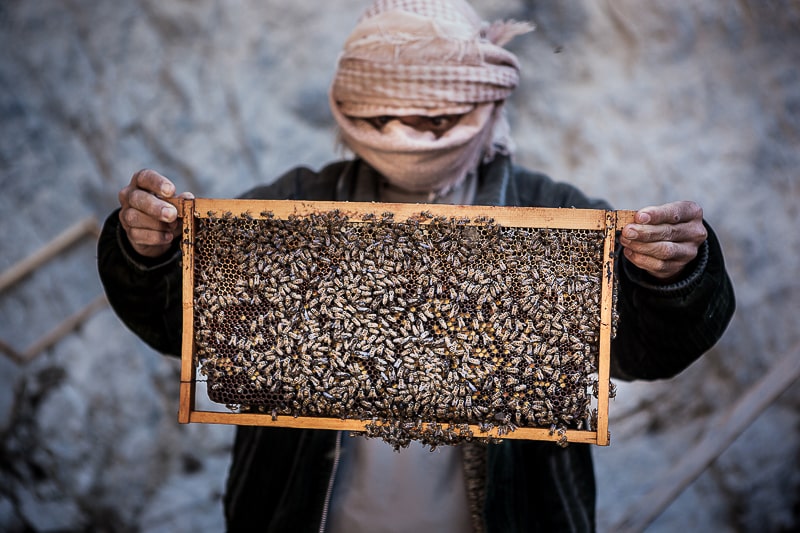
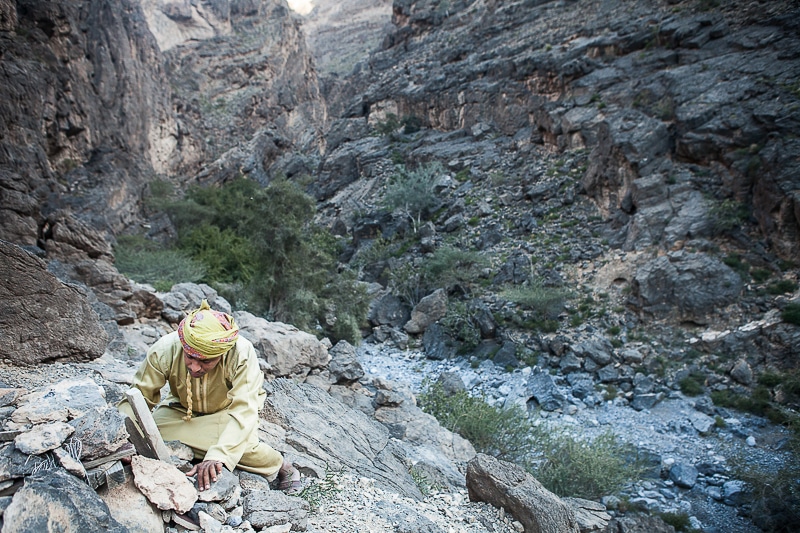






- Details
Every photo essay has a million details that surround the idea. Finding these will add depth and color to your story. We created details that we hoped would place the viewer, with us, inside the environment of our story. Focus on the small to build a bigger story.
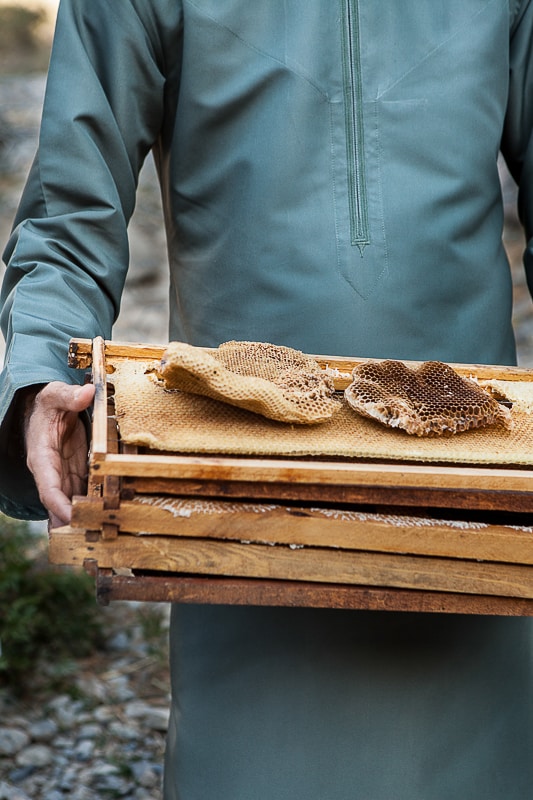

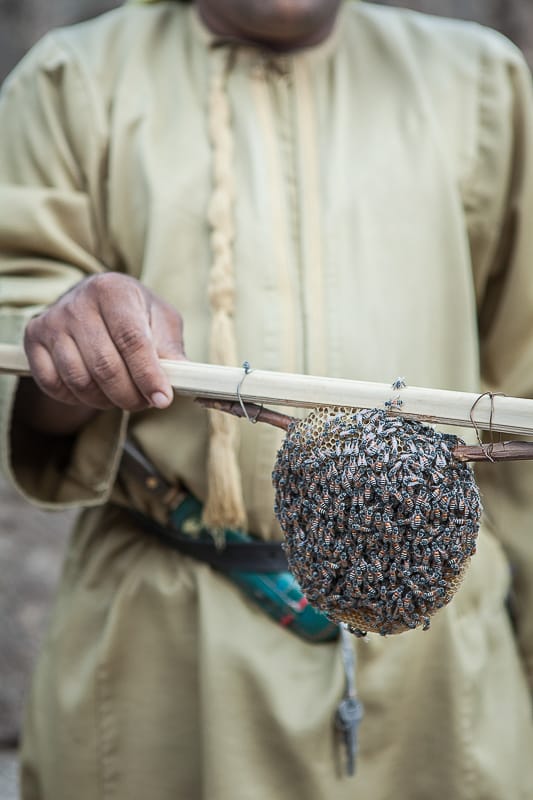
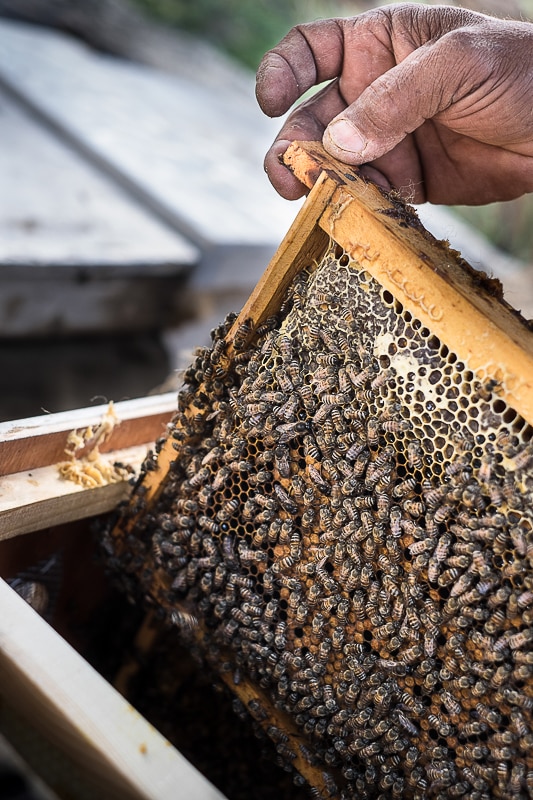
- The Clincher
This is the end of your photo essay. Like the lead photo, the clincher should sum up the entire idea, but at the same time try to add resolve to the story. This clincher here might say to the viewer that the future and secrets of Oman’s natural honey is in the hands of the next generation. However you want to end your photo essay, it needs to end with strength. A solid image for the viewer to walk away with.
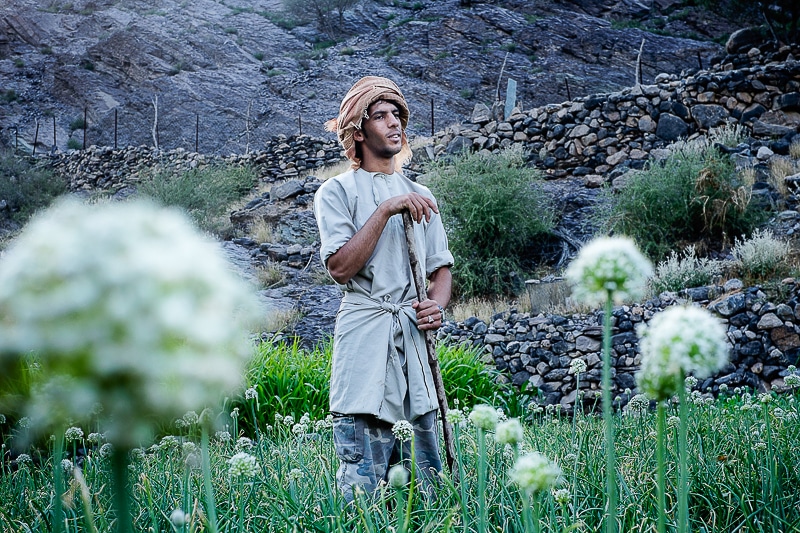
3. PUBLISHING PHOTO ESSAY THAT ARE STELLER
Yes, I know it’s cheesy, that last sub-head was a play on the Steller App, but once you have your story finished you have to show it to the world, right? The Steller App is a cool new (at least to us) way of showing off your photo essay, just how it should be. In a clickable book, that can be posted straight on your blog! Try ours out.
The Steller App has a Instagram-like feel to it, with the ability for your viewers to add comments and share it with their friends. And personally, I’m in love with seeing how people are using it. I even see some authors adding videos of their adventures.
I think it’s going to be an amazing addition to the toolbox of food bloggers, who are wanting an unique way to share their recipes with their fans.
Do you have any Steller Stories? Post a link to it in the comment section, I’d love to see them!
